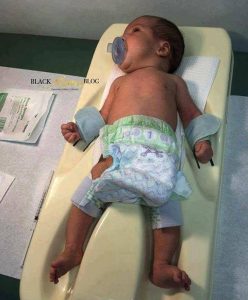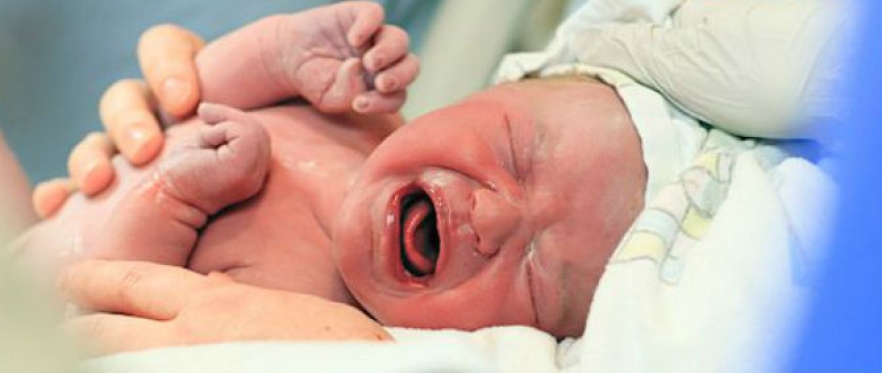Infant Circumcision Not Recommended
Infant Circumcision Not Recommended – My thoughts about amputating the male foreskin. Rewritten by Certified Sexological Bodyworker, Aleena Aspley on 4th September 2023.
.
.
COMMONLY HEARD PHRASES SAID ABOUT INFANT CIRCUMCISION
- “it hurts more as an adult,”
- “babies can’t feel pain,”
- “he won’t remember it,”
- “it’s just extra skin”
- “We want him to look the same as his father”
- “For as long as I can remember, all male babies in our family are circumcised”
Today, my blog aims to challenge these statements.
.
.
The Reason Circumcision is done to Infant Babies is because almost NO Adult Male would put up his Hand to have it done!
.
.

“Me, Me, Pick Me!”
.
.
MY THOUGHTS ON AMPUTATING THE MALE FORESKIN
For me personally, I did not have my son circumcised. I did consider this proceedure while he was in the womb, however, once he was born, I had a distinct energetic knowing that my son was born perfect, nature doesn’t make any mistakes and that he would stay intact.
I do remember day three of my baby boys life. His father arrived at the hospital with a best friend and for about 30 minutes they did their best to talk me into getting my son circumcised. I didn’t know much, about much, back then and I am so glad that I trusted my intuition and I said “NO”!!!
.
.

.
.
PICTURE THIS CIRCUMCISION SCENE
A male baby is securely fastened, arms and legs spread wide, on a plastic board. He struggles against his restraints, tugging, whimpering, and eventually softly crying in helplessness.
Speaking in a soothing manner, his care giver carefully touches and stokes him to ease his distress. Gradually, he began to relax and falls momentarily silent. However, the tranquility is abruptly shattered by a piercing scream as the baby reacts to the discomfort of his foreskin being pinched and compressed while the doctor attaches a clamp to his penis.
 The intensity of the shriek escalated when the doctor inserts an instrument between the foreskin and the glans (the head of the penis), forcibly separating the two structures. With only his head free to move, the baby shakes it vigorously as the doctor employs another clamp to compress the foreskin lengthwise, followed by a surgical cut. This enlargement allows for the insertion of a circumcision instrument, a device designed to protect the glans (the head of the penis) from inadvertent severing during the procedure.
The intensity of the shriek escalated when the doctor inserts an instrument between the foreskin and the glans (the head of the penis), forcibly separating the two structures. With only his head free to move, the baby shakes it vigorously as the doctor employs another clamp to compress the foreskin lengthwise, followed by a surgical cut. This enlargement allows for the insertion of a circumcision instrument, a device designed to protect the glans (the head of the penis) from inadvertent severing during the procedure.
Overwhelmed by continuous, high-pitched screams, the baby begins to gasp and choke, his breathless cries echoing throughout the room.
In the subsequent stage of the surgery, the doctor further compresses the foreskin against the circumcision instrument before ultimately amputating it. The baby, now limp, appears utterly exhausted, traumatized, and spent from his horrific ordeal.
.
.
POST CIRCUMCISION
Following an infant circumcision, the entire glans is exposed, resembling an open wound akin to a third-degree burn. Over time, this wound transforms into a prominent scar.
In contrast, an adult circumcision typically involves the placement of a clamp (since the foreskin has likely already detached from the glans), resulting in a wound that manifests as a scar encircling the circumference of the penis.
.
.
THE TRAUMA AND EFFECTS ON AN INFANTS BRAIN AFTER CIRCUMCISION
By Paul D. Tinari, PhD
“It was my idea to use fMRI and/or PET scanning to directly observe the effects of circumcision on the infant brain. Analysis of the MRI data indicated that the surgery subjected the infant to significant trauma. The greatest changes occurred in the limbic system concentrating in the amygdala and in the frontal and temporal lobes.
A neurologist who saw the results postulated that the data indicated that #circumcision affected most intensely the portions of the victim’s brain associated with reasoning, perception and emotions.
Follow up tests on the infant one day, one week and one month after the surgery indicated that the child’s brain never returned to its baseline configuration.
In other words, the evidence generated by this research indicated that the brain of the circumcised infant was permanently changed by the surgery.” — Paul D. Tinari, PhD
.
.
CIRCUMCISION STUDY ENDS EARLY DUE TO INFANT TRAUMA
In a recent investigation into circumcision practices in the United States, an eye-opening study has unearthed distressing findings that shed light on the enduring pain experienced by baby boys during this procedure.
Though conducted in 1997, the study’s relevance persists today as it exposes a disconcerting reality: the majority of baby boys in the U.S. continue to undergo circumcision surgery without anesthesia.
ANESTHESIA DID NOT WORK — Even when anesthesia is employed, it often falls short in alleviating the excruciating pain, given the heightened sensitivity of infants following birth. Notably, the study discovered that even the most proficient dorsal block injections fail to numb the area below the perineal nerve, where the frenulum is retracted and cut.
The outcome of this research is nothing short of shocking, as it reveals that most babies subjected to circumcision react with piercing screams, necessitating physical restraint or inducing a semi-comatose state to endure the traumatic experience.
ATLANTA (CNN) – The results of a groundbreaking new study have been so disturbing that doctors chose to terminate it prematurely rather than subject any more infants to circumcision without the crucial provision of anesthesia. Click Here to read the full blog.
.
.
ABOUT THE FORESKIN
The natural development of the foreskin is a crucial aspect to understand. At birth, the foreskin (prepuce) is attached to the head (glans) of the penis by a membrane that resembles the way your nails adhere to your fingertips.
Additionally, a significant structure known as the “ridged band” is located at the tip of the foreskin. This band serves as a protective sphincter, allowing urine to exit through the urinary opening while preventing foreign substances from entering.
As a child progresses through childhood, the membrane gradually breaks down, and the foreskin’s opening expands through solo touching and pleasuring. Once this process reaches completion, the foreskin becomes retractable. On average, full retraction is achieved around the age of 10, but it can extend through puberty and, in some cases, the foreskin may never become fully retractable.
.
Infant Circumcision Not Recommended
PENILE PHIMOSIS
Penile phimosis, is a condition in which the foreskin of the penis is too tight to be pulled back over the head (glans). It’s estimated, that only 1% of male, still have phimosis when they’re 16 years old.
One common approach, to that has been very successful, in treating mild to moderate cases of penile phimosis is the use of topical creams containing a corticosteroid like betamethasone. If this is an issue for you, you can have a chat with your doctor to find out about corticosteroid creams and stretching your foreskin, so that it can retract over the glans of your penis.
.
.
COMPELLING ARGUMENTS
AGAINST CIRCUMCISION
.
1. Infant Foreskins Aren’t Retractable.
Due to the non-retractable nature of an infant’s foreskin, the initial step before circumcision is to separate it from the glans. This separation involves gently freeing the foreskin with a blunt probe. Following an infant circumcision, the entire glans is left as an open wound akin to a third-degree burn, eventually forming a substantial scar.
In contrast, adult circumcision typically involves the placement of a clamp, as the foreskin has usually already detached from the glans. Consequently, the resulting wound only encircles the circumference of the penis, leading to a different outcome compared to infant circumcision.
.
.
2. Pain And Anesthesia
For a long time, medical professionals held the belief that infants did not experience pain, to the extent that some surgical procedures, like open-heart surgery, were performed on babies without anesthesia.
However, recent studies have provided compelling evidence to challenge this assumption. These studies suggest that infants may, in fact, perceive and experience pain more intensely than adults. This evolving understanding has prompted changes in how medical procedures and interventions are approached in pediatric care.
.
Infant Circumcision Not Recommended
3. Precision in Adult Circumcision
Delaying circumcision until adulthood offers several distinct advantages, primarily stemming from the fact that the male penis is fully developed at this stage. This delay allows surgeons to perform a more precise and informed procedure while safeguarding critical structures like the frenulum.
The maturity of the penis allows for a more tailored surgical approach. Surgeons can determine precisely how much tissue needs to be removed to achieve the desired outcome, whether for medical, religious, or personal reasons. This tailored approach minimizes the risk of over- or under-removal of tissue.
.
.

.
.
4. Risks of Infant Circumcision
Performing circumcision on infants comes with the risk of either removing too much or too little tissue. Excessive removal can lead to issues such as painful erections and various complications. Conversely, insufficient removal may result in adhesions, where the remaining foreskin reattaches to the glans. These risks highlight the importance of careful consideration when performing infant circumcisions.
.
.
5. Infant Pain Sensitivity
Recent studies have revealed that infants may experience pain more intensely than previously thought. Research on various anesthesia methods has demonstrated that these methods may not completely eliminate pain during circumcision. Consequently, it is important to recognize that all babies undergoing circumcision are likely to experience some level of pain and stress, underscoring the significance of pain management strategies and ethical considerations in these procedures.
.
Infant Circumcision Not Recommended
6. Circumcision and the Long Term Effects on the Brain
Painful experiences in infancy, such as circumcision performed without anesthesia, may leave enduring effects on the developing brain. Research has indicated altered pain responses in infants who underwent circumcision without anesthesia, and brain imaging studies have unveiled persistent changes in brain structure and function associated with such experiences.
.
.
7. Trauma Memory And Babies
Mounting evidence suggests that pre-verbal children can retain trauma in their bodies, even in the absence of verbal expression. This concept challenges traditional assumptions about how children process and remember traumatic events and highlights the potential long-term impact of early painful experiences like circumcision.
- Trauma and Memory Formation: Research into child psychology and neuroscience has shown that the brain is capable of encoding traumatic events as somatic or body memories, even before children develop language skills. These somatic memories can be stored in various ways, such as changes in neurobiological pathways, neural connections, and physiological responses to stress.
- Stress Response: Infants and young children have developed stress response systems that react to potentially threatening or painful stimuli. Painful encounters like circumcision can trigger these stress responses, leading to the release of stress hormones like cortisol. These heightened stress reactions can contribute to the encoding of somatic memories associated with pain.
- Long-Term Impact: Somatic memories may persist over time, potentially influencing an individual’s emotional and behavioral responses in the future. While pre-verbal children may not consciously remember the specifics of an event, their bodies can retain a heightened sensitivity to similar experiences or stimuli, potentially leading to anxiety, fear, or discomfort in related situations later in life.
- Behavioral and Physiological Indicators: Even though pre-verbal children cannot express their memories verbally, their behavior and physiological responses can serve as indicators of retained trauma. These may manifest as changes in mood, increased stress responses, or altered behavioral patterns.
- Interactions and Relationships: The impact of somatic memories can extend to an individual’s interactions and relationships. Children who have experienced early trauma may exhibit difficulties in forming secure attachments, regulating emotions, or building trust with caregivers or peers.
Mounting evidence suggests that pre-verbal children can retain traumatic experiences as somatic memories, even in the absence of verbal expression. Understanding the potential for somatic memory formation underscores the significance of providing compassionate and pain-reducing interventions during medical procedures and considering their long-term impact on a babies well-being.
.
Infant Circumcision Not Recommended
8. Non-Crying Distress
It’s essential to recognize that infants exhibit distress in various ways, and not all of them resort to crying as a means of expressing discomfort. While some infants may cry vigorously when distressed, others may adopt a seemingly calm demeanor, masking their inner discomfort. This variation in responses underscores the importance of paying close attention to physiological and behavioral cues to better understand an infant’s state of distress.
Research into infant behavior and pain perception has revealed that even infants who appear calm may still be experiencing distress at a physiological level. This means that while they might not cry, their bodies could be responding to pain or discomfort in subtle ways. Physiological indicators such as changes in heart rate, blood pressure, and stress hormone levels can provide valuable insights into an infant’s well-being during and after a procedure like circumcision.
Furthermore, mothers and caregivers often play a vital role in recognizing signs of distress in their infants. They are attuned to their baby’s behaviors and routines. Mothers have reported noticeable alterations in breastfeeding patterns and eye contact following circumcision. These changes can be indicative of their infant’s discomfort or unease.
Breastfeeding may become more challenging for an infant who has recently undergone circumcision due to pain or discomfort. Changes in feeding behavior, such as latching difficulties or shorter feeding durations, might be observed. This can be distressing for both the infant and the mother.
Additionally, shifts in eye contact, social engagement, or overall responsiveness could be interpreted as signs of an infant’s discomfort. Infants often rely on eye contact and facial expressions to communicate and bond with their caregivers. Any deviation from their typical patterns may suggest that they are experiencing distress or discomfort.
.
.
9. Nerve Damage And Sensitivity Loss
Circumcision can lead to long-lasting consequences, including permanent damage to the nerves of the penis and a reduction in sensitivity. Extensive research has unveiled substantial disparities in reflex tests and overall sensitivity between men who have undergone circumcision and those who remain intact.
The foreskin, which is removed during circumcision, contains an intricate network of nerves and specialized structures that play a crucial role in enhancing penile sensitivity. This network includes Meissner’s corpuscles, which are highly sensitive mechanoreceptors, and specialized nerve endings that contribute to heightened tactile and sexual sensations.
When circumcision is performed, these valuable nerves and structures are excised, potentially diminishing the overall sensory experience. Consequently, circumcised individuals may have reduced tactile sensitivity on the glans and shaft compared to their intact counterparts.
Studies have consistently shown that men with intact foreskins tend to exhibit greater sensitivity during sexual activities. This heightened sensitivity can translate into a more pleasurable sexual experience for both the individual and their partner.
In summary, circumcision has the potential to cause permanent damage to penile nerves and significantly diminish sensitivity. The unique nerve structures found in the foreskin are integral to sexual experiences, and their removal can impact the overall sensory perception of the penis.
.
Infant Circumcision Not Recommended
10. Impact on Sexual Function
The foreskin is a highly specialized and functional part of the male anatomy, and it plays a crucial role in sexual function and pleasure for both partners during intercourse. Its unique characteristics contribute to a more enjoyable and comfortable sexual experience. Here’s an expanded explanation of the importance of the foreskin:
- Protection of the Glans: The foreskin serves as a natural protective cover for the glans (head) of the penis. It keeps the glans moist and sensitive, shielding it from friction and abrasion. This protection enhances the overall comfort and pleasure during sexual activities.
- Enhanced Sensation: The foreskin contains a wealth of nerve endings and specialized structures, such as Meissner’s corpuscles, which are highly sensitive mechanoreceptors. These nerves play a vital role in transmitting pleasurable sensations during sexual stimulation. The presence of the foreskin can heighten the overall sensitivity of the penis, enhancing the sexual experience for both partners.
- Skin Mobility: One of the foreskin’s unique features is its mobility. It can glide back and forth over the glans, reducing friction during intercourse. This mobility mimics a natural lubrication mechanism, contributing to smoother and more comfortable penetration for both partners.
- Natural Lubrication: The foreskin secretes natural lubricants that aid in reducing friction during intercourse. This natural lubrication enhances comfort and reduces the need for additional artificial lubricants.
- Reduction of Discomfort: During intercourse, the foreskin’s ability to move freely can reduce friction and discomfort, particularly if the skin is tight or if the partners have different levels of vaginal lubrication. The foreskin’s mobility helps adapt to varying conditions, making the experience more pleasurable.
- Stimulation for Partners: The presence of the foreskin can provide added stimulation for both partners. Its gliding motion and tactile sensations can enhance sexual pleasure and intimacy during intercourse.
- Variability in Sensation: Every individual’s experience of sexual pleasure is unique, and the presence of the foreskin allows for variability in sensation and responsiveness. This natural diversity can contribute to more satisfying sexual encounters.
- Reduced Risk of Dryness: The foreskin helps maintain a suitable moisture level around the glans, reducing the risk of dryness or discomfort during intercourse.
In contrast, circumcision involves the removal of the foreskin, which can alter these essential functions and sensations. Circumcised men may experience increased friction, reduced sensitivity, and potentially discomfort during sexual activities, particularly if the skin is tight or if there’s a lack of natural lubrication.
Therefore, the foreskin is not merely a vestigial structure but an integral part of male sexual anatomy that contributes to enhanced pleasure and comfort during intercourse for both partners. Understanding its functions underscores the significance of considering the potential impact of circumcision on sexual experiences and the importance of informed decision-making regarding this procedure.
.
.
ETHICAL CONSIDERATIONS AND INFANT CIRCUMCISION
The ethical dimensions of child circumcision frequently spark debate, especially concerning the infant’s autonomy and the safeguarding of bodily integrity.
INFORMED CONSENT – One perspective argues that infants lack the capacity to grant informed consent, necessitating a delay in the decision to undergo circumcision until they reach an age where they can autonomously and knowledgeably choose what happens to their bodies. This standpoint places paramount importance on respecting an individual’s autonomy when it comes to decisions concerning their own physical well-being. However, pinpointing the exact age at which an individual can genuinely provide meaningful consent proves to be a complex challenge.
In essence, ethical discussions pertaining to infant circumcision revolve around the infant’s ability to provide informed consent and the preservation of their autonomy over their own bodies.
Advocating for the postponement of circumcision until a child can independently offer informed consent underscores the principle of upholding an individual’s sovereignty concerning their body.
.
.
.
.
.
.
.
SIX STEPS TO UNDERSTANDING INFANT CIRCUMCISION CLICK HERE
.
.
THE DIFFERENCE BETWEEN AN INTACT AND CIRCUMCISED INFANT PENIS CLICK HERE
.
.
WATCH AN INFANT
CIRCUMCISION PROCEDURE
You would not want to have a medically unnecessary procedure performed on your newborn baby without understanding exactly what was going to happen. This video is important to watch. (If it’s hard for you to watch, imagine how hard it is for a newborn to go through.) No matter what kind of pain management is used during a circumcision, your baby will still feel pain. This is not a “little snip.” It is a significant loss of purposeful body parts. CLICK HERE
.
.

FORESKIN INTACT — ONE HAPPY BABY BOY!
.
Infant Circumcision Not Recommended
Written by CSB Aleena Aspley
Certifed Sexological Bodyworker / Somatic Sexologist
Aleena’s bodywork studio is located in North Brisbane and is by appointment only.
Bodywork Directory — AleenaAspley.com
Women — YoniWhisperer.com.au
Men — LingamWhisperer.com.au
Couples — TantricWhisperer.com
.
.

